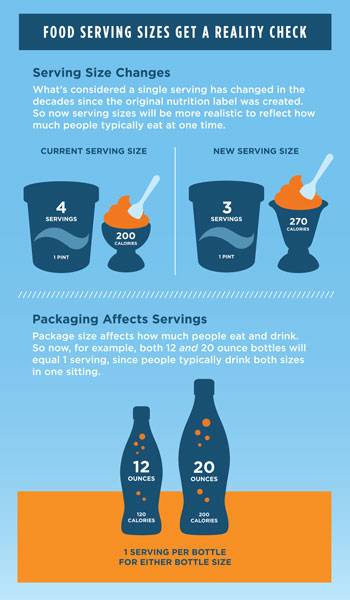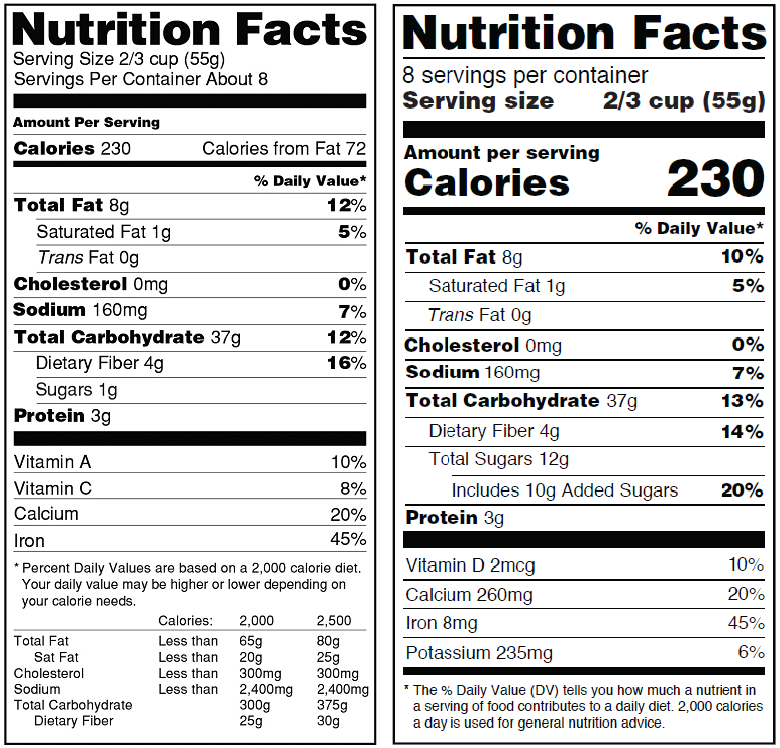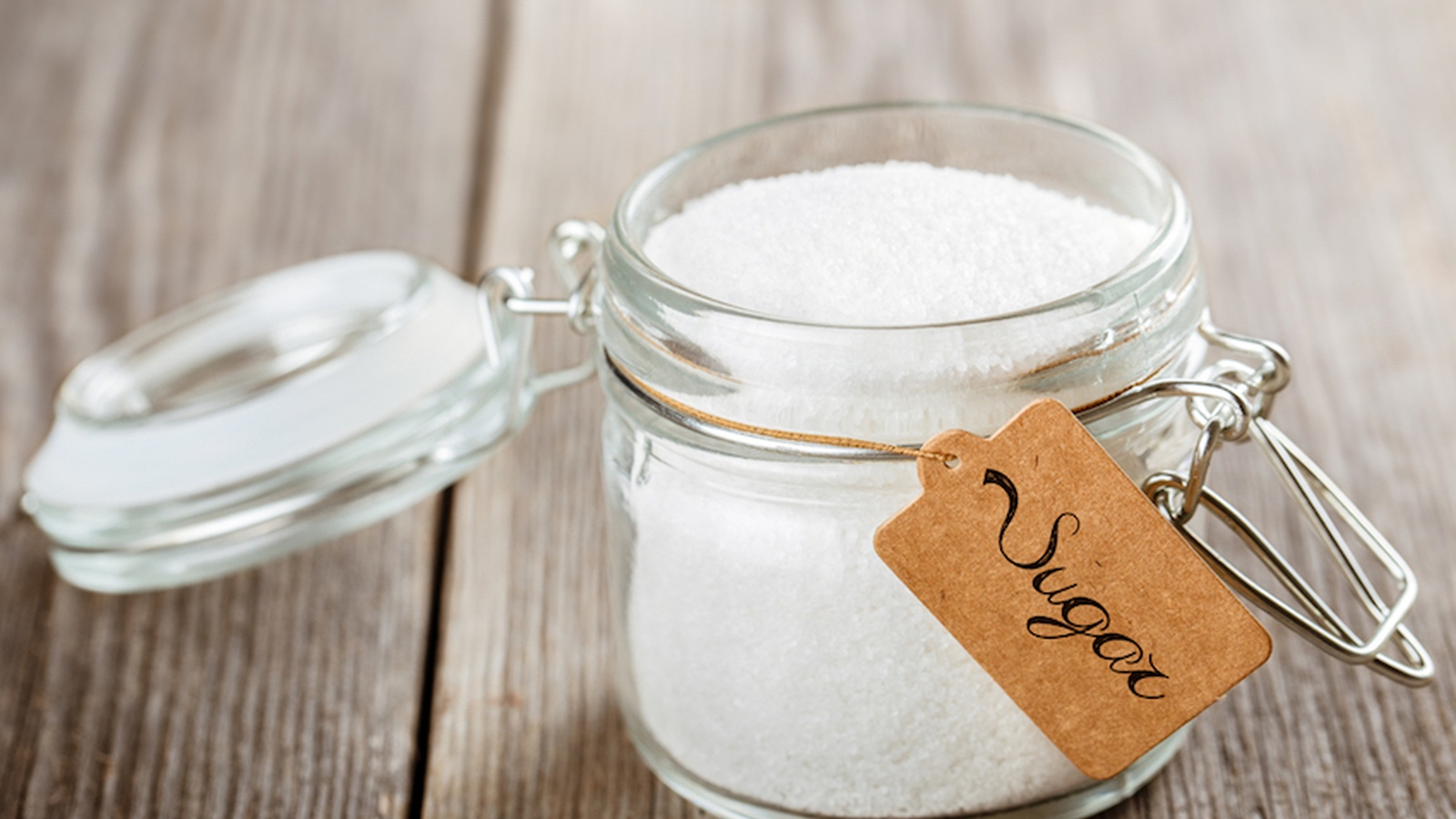What The FDA Nutrition Label Changes Mean For You & The Sugar Industry
There are changes happening in the world of nutrition labeling and it's great news for you and me!
What's happening?
After 20 years of the same outdated nutrition panel, the FDA has announced its plans to change the nutrition label to reflect updated nutrition research and more realistic ways (and amounts) that we consume foods.
What's changing?
There are a number of things that will change on the label. You can see the full FDA Nutrition Label report here. We've highlighted the most important changes for all of us as consumers below:
1. Calories And Serving Sizes
The type size for “Calories,” “servings per container,” and the “Serving size” declaration, and bolding the number of calories and the “Serving size” declaration to highlight this information.
Some serving sizes will increase and others will decrease because, by law, the serving sizes must be based on the amounts of food and drink that people typically consume, not on how much they should consume.
For example, the reference amount used to set a serving of ice cream was previously ½ cup and now is changing to a
cup. The reference amount used to set a serving size of soda was previously 8 ounces and now is changing to 12 ounces. The reference amount for yogurt is decreasing from 8 ounces to 6 ounces. Nutrient information on the new label will be based on these updated serving sizes so it matches what people actually consume.

2. Actual Amounts Of Vitamin D, Calcium, Iron, and Potassium Will Be Listed
Manufacturers must declare the actual amount, in addition to percent Daily Value of vitamin D, calcium, iron, and potassium. They can voluntarily declare the gram amount for other vitamins and minerals.Vitamin D and potassium are nutrients Americans don’t always get enough of, according to nationwide food consumption surveys, and when lacking, are associated with increased risk of chronic disease.
Vitamin D is important for its role in bone health, and potassium helps to lower blood pressure. Calcium and iron are already required and will continue to be on the label.
3. Fat Gets The Green Light
While continuing to require “Total Fat,” “Saturated Fat,” and “Trans Fat” on the label, “Calories from Fat” is being removed because research shows the type of fat is more important than the amount. (Finally! We've been saying this for years!)
Old VS New Label:

And the biggest, possibly most exciting change of all that has the sugar industry reeling:
4. Added Sugars Will Be Revealed!
“Added sugars,” in grams and as percent Daily Value will be included on the label. Scientific data shows that it is difficult to meet nutrient needs while staying within calorie limits if you consume more than 10 percent of your total daily calories from added sugar, and this is consistent with the 2015-2020 Dietary Guidelines for Americans.
Why? It is difficult to meet nutrient needs while staying within calorie requirements if you consume more than 10 percent of your total daily calories from added sugars.
On average, Americans get about 13 percent of their total calories from added sugars, with the major sources being sugar-sweetened beverages (including soft drinks, fruit drinks, coffee and tea, sport and energy drinks, and alcoholic beverages) and snacks and sweets (including grain-based desserts, dairy desserts, candies, sugars, jams, syrups, and sweet toppings).
The Washington Post reports "Several major food associations, including (but not limited to) the American Bakers Association, American Beverage Association, American Frozen Foods Institute, Corn Refiners Association, International Dairy Foods Association and National Confectioners Association, fought vehemently to preserve the existing label. They waged a long, drawn-out battle against the new "added sugars" components, which lasted more than two years. In the end, they lost."
"The hope is that the new label, which makes clear when a food manufacturer has relied heavily on sugar to make its product tasty, will help Americans make more informed choices about the foods they eat. The daily recommended limit is 50 grams of added sugar, which, as Politico pointed out, means a can of soda will look much less appealing to anyone who bothers to peek at the label."

Understanding exactly what you're eating when you choose packaged foods is so important, and finally, we're heading the right direction with clearer labeling.
Could This Be The Push We Needed To Force Manufacturers To Create More Healthy Options? Let Us Know Your Thoughts Below!
If you haven’t already, join our free global challenge at www.GetOffTheGluten.com to receive daily recipes & health tips, access to our private group for support and inspiration, plus before and after testing to track your progress in key areas of your life such as weight, sleep, bloating, skin-conditions, mental health and more!


